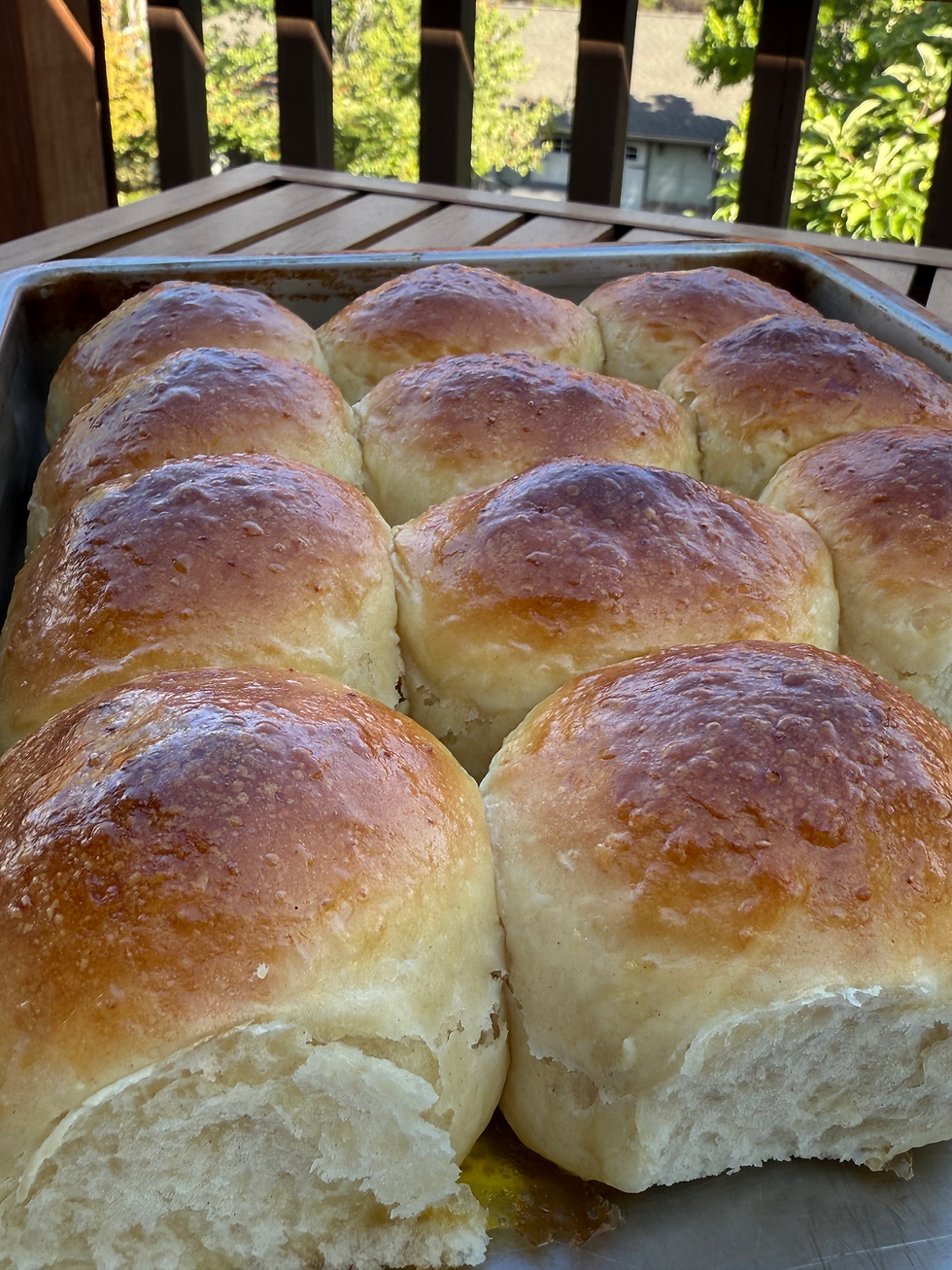Milk & Honey Rolls
- Fit Chef Susie

- Jun 2, 2024
- 2 min read

Japanese milk rolls are unique in that they have a special addition. It’s simple enough and only adds a bit more time to your recipe. By cooking flour and water into a soft paste; your bread will last longer. I have included honey in this version.
Ingredients
Paste:
1/3 cup milk 81g
1/3 cup water 78g
1/4 cup flour 30g
Dough:
1 cup milk 244h
2 tsp salt 11g
1/4 cup white sugar 49g
1/4 cup honey 85g
1/2 cup butter, melted 113g
2 eggs
4 3/4 - 5 cups flour 570-600g
4 tsp yeast
Instructions
Please read Susy’s tips and tricks below, before beginning!
In a small saucepan heat milk and water together, til very hot. Add flour all at once. Stir well using a whisk. Blend and cook a minute or so until the becomes a soft mass. Remove from sauce pan and let cool in a bowl. Set aside.
Place warm milk, salt, sugar, honey, butter, and eggs in your machine.
Now add cooled paste mixture to the pan with the butter, milk, sugar mixture. You want a temperature around 125F/51c.
Add the lesser amount of flour: 4 3/4 cups and yeast.
Set the dough setting on your machine. Check the dough ball as it kneads. It should be smooth and soft; slightly tacky. If needed add more flour. Or add more liquid in very small quantities. (A tsp or so.)
Let the dough rise in bulk; in the machine. Remove and gently deflate the air. Divide into 20 balls. This is approximately 78g/2.75 oz each. This makes fairly large rolls.
Shape your rolls and let rise in a lightly greased in 2- 9x13 pan. Be sure and cover with a tight fitting lid or plastic wrap. Uneven heat will produce sluggish dough fermentation. Let them rise till they are light and puffy. Do the poke test.
Preheat oven to 350F/ 177c. Bake for 22-25 minutes. They will be darker than usual. If the colour is darker than you desire; cover with foil while it continue to bake.
Remove from pan within 5 minutes and place a rack to cool.
Susy’s Tips and Tricks
Tanghzong is a cooked paste that is gelatinized flour. It keeps bread fresher, longer.
Use any milk you desire.
Spray honey measuring cup with non-stick spray it will release easily.
I used bread flour. You can use ap flour. The rise might not be as good but I doubt it’s noticeable.
Measuring flour by weights doesn’t always work, mainly because flour is subject to humidity and barometric pressure. Measure as you desire. It’s better to start with a lesser amount.
You can warm up unshelled eggs in some hot tap water.
Warm temps are good enough. Friction from kneading increases the temperature of the dough. No need to be precise. Just don’t have overly hot liquids. They can kill yeast.
Use instant or active dry yeast. Same quantity. Active dry yeast is a tiny bit slower to rise. Don’t fret. Use what you have. No need to proof either.
Shape your dough by creating a smooth round ball. Don’t just slice and cut. Shaping helps the dough create a nice shape and a better rise.








Comments